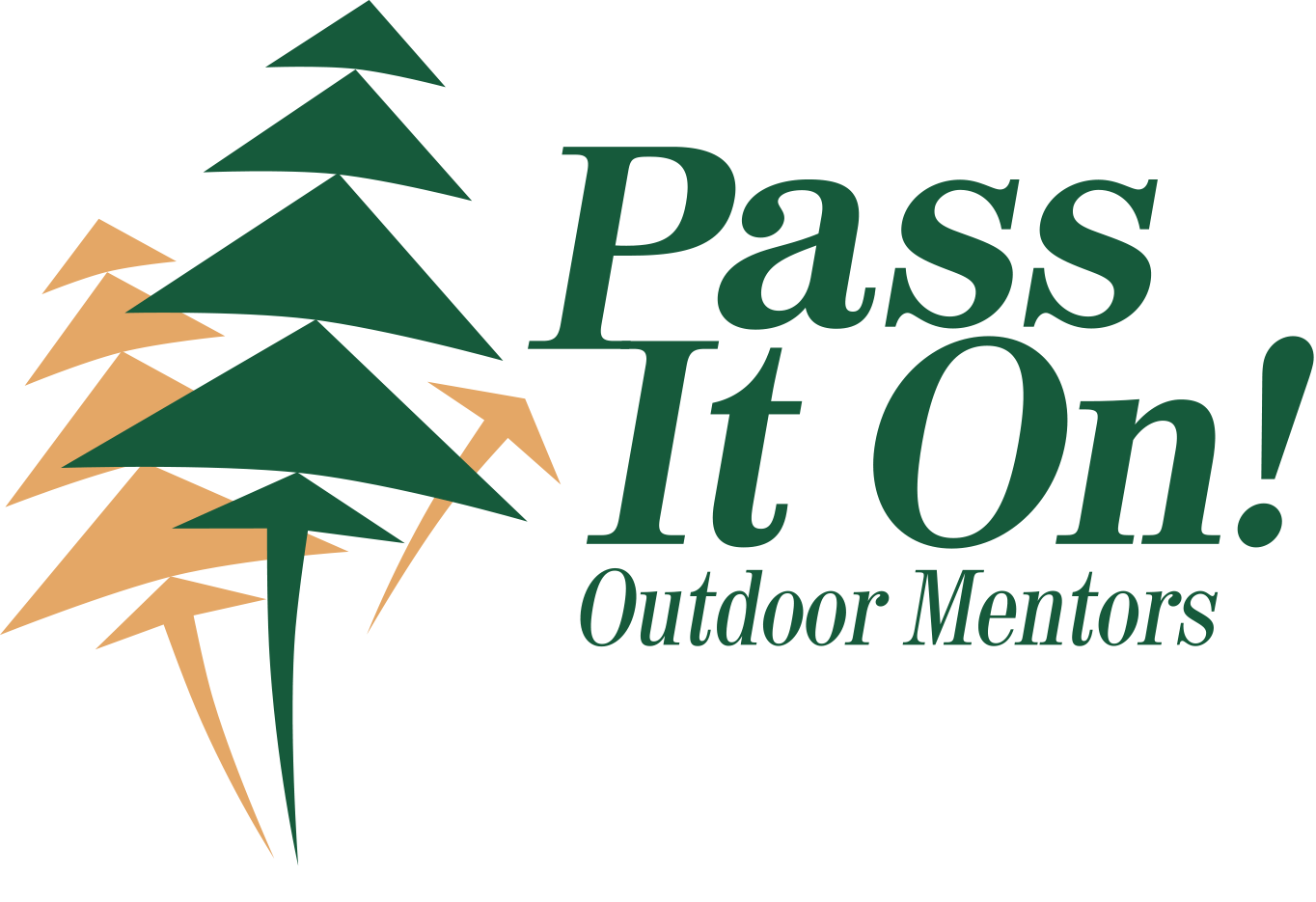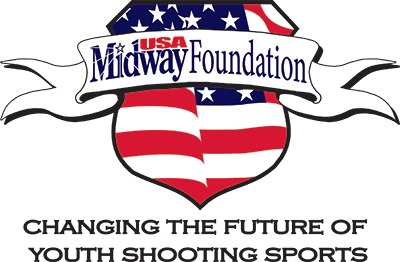Join the
+ONE® MOVEMENT
From small game and upland birds to big game, waterfowl and even the creatures that define the term “top of the food chain," hunting offers a priceless bond with the natural world, food for the table and a welcome respite from the world’s daily grind.
Learn MoreAll About Hunting
From small game and upland birds to big game, waterfowl and even the creatures that define the term “top of the food chain,” hunting offers a priceless bond with the natural world, food for the table and a welcome respite from the world’s daily grind.
GET STARTED IN HUNTING
If just one in three hunters add one new person to our hunting traditions, we’ll secure a strong future for generations to come. Be the one. Ignite the passion that can change the course of someone’s life forever. For all hunting has done to enrich your life, join the +ONE movement and invite someone hunting. Share your experience with posts on social media. #PlusOneMovement.
+ONE Partner Organizations
Working together to encourage responsible mentorship in local communities.
FIND A RANGE
Hunting ACTIVITIES
Deer Hunting
Hear the words “deer hunting” and you’ll likely think of the ubiquitous whitetail—and for good reason. You can find this species in 44 states, usually in plentiful numbers on private and public lands. In five of the six states the whitetail doesn’t call home, you can still deer hunt, but in Alaska and California it will be for the elusive black-tail, Nevada and Utah are home on the range for mule deer, and Coues deer have Arizona for an address. (Trivia: The only state that lacks a native deer population is Hawaii!).
Hunting ACTIVITIES
Pheasants
With a helicopter rise at the flush preceding its zippy horizontal flight for yonder, a long tail that’s distracted more than a few hunters to miss and a cackle that mocks when you do, this gaudy bird reigns the world of upland bird hunting. So popular is this bird in the vast plains of the Midwest that opening day is legitimate cause to skip school, work, church and afternoon college football. If you’ve ever been to an opening day in Pierre, South Dakota, you’ll know exactly what we’re talking about.
Hunting ACTIVITIES
Elk
Considered one of the most majestic animals on the continent, the Rocky Mountain elk is emblematic of western hunting. From the bugling of herd bull monarchs keeping their harems of cows in line to the breathtaking vistas and, oh, those towering tiers of antlers, this is a prized experience for anyone with the patience to hike the miles and put the hours in behind a binocular to plan a stall. Colorado, Wyoming, Montana, Washington, Oregon, Arizona, New Mexico and Utah are always top destinations, but reintroduced populations in states like Kansas, Kentucky,
Hunting ACTIVITIES
Wild Turkeys
They’re not just for Thanksgiving anymore! In fact, America’s wild turkeys are as much a sign that spring is here as the Easter bunny. With eyesight that puts an eagle to shame and an all-too-often reluctance to come within range despite the lively “conversation” between bird and a hunter’s slate call, spring turkey seasons are a challenge that see camo-clad, shotgunners head to the woods and fields in droves.
Hunting ACTIVITIES
Waterfowl
Four flyways, colorful species small and large, the art of the decoy and the thrill of a Labrador retriever leaping over the boat’s bow to make an enthusiastic retrieve of goose or duck make waterfowling one of the most thrilling hunting sports around. It’s also one of the oldest—drawings of waterfowl have been found in Ice Age caves, Egyptian tombs and even the artwork of B.C.-era Peru. America’s earliest settlers from “across the pond” found their new home in the East boasted a nearly unlimited supply of ducks, geese and swans—good eating for starving Colonials.
Find a preserve
WHERE TO HUNT
Wingshooting
Hunting preserves—private, regulated properties that stock game animals—are a great resource for hunters. They provide a controlled environment and an increased chance for success. Big-game preserves often include one-on-one guiding, great for novices, while upland bird preserves are a favorite for training young bird dogs.
WHAT YOU NEED TO KNOW
Hunting Basics And Tips
| 1 |
Hunting safety is the first priorityWatch a safety video or take a hunter education course to learn more. |
| 2 |
Read hunting laws and regulationsHunting laws and regulations vary from state to state. Learn more. |
| 3 |
Wear proper hunting gearThe more comfortable you are, the longer you’ll hunt and the better the chances for success. |
| 4 |
Essential hunting equipmentCheck out where to buy hunting firearms and ammo for your next trip. |
| 5 |
Go with a friendInvite someone new hunting. Check out the apprenticeship hunting program. |
Obtaining A Hunting License
Hunting licenses can be purchased at various places, including local firearms retailers and angler supply stores, as well as directly from the local wildlife management departments online. States usually require hunters to take a hunter education course before they take to the woods, but many make exceptions if the hunter will be accompanied by a fully licensed and experienced hunter through an apprenticeship program.
13 Awesome Turkey Hunting Stories from this Spring Season
Hunters Register 50,435 Wild Turkeys in 2024 Spring Season, Fourth Highest in History
[caption id="attachment_53877" align="aligncenter" width="450"] Dylan Hazen[/caption]
Hunters registered 50,435 wild turkeys in Wisconsin's 2024 spring season, a 22% increase over the five-year average and the fourth highest in state history, reflecting the state's strong turkey population and favorable conditions. Mild winters and warm, dry springs contributed to excellent adult survival and nesting success, leading to more turkeys on the landscape. The 2024 season marks the fourth time Wisconsin hunters have harvested over 50,000 turkeys, with similar successes noted in neighboring states. The Wisconsin DNR's turkey management strategies, validated by these results, continue to support sustainable hunting practices and population growth. Read full article.
Dylan Hazen[/caption]
Hunters registered 50,435 wild turkeys in Wisconsin's 2024 spring season, a 22% increase over the five-year average and the fourth highest in state history, reflecting the state's strong turkey population and favorable conditions. Mild winters and warm, dry springs contributed to excellent adult survival and nesting success, leading to more turkeys on the landscape. The 2024 season marks the fourth time Wisconsin hunters have harvested over 50,000 turkeys, with similar successes noted in neighboring states. The Wisconsin DNR's turkey management strategies, validated by these results, continue to support sustainable hunting practices and population growth. Read full article.
Bountiful Minnesota Spring Wild Turkey Hunting Sets Records
[caption id="attachment_53879" align="aligncenter" width="450"] Bill Marchel[/caption]
Minnesota wild turkey hunters achieved a record harvest this spring, bagging over 16,600 birds, a 19% increase from the previous record. Contributing factors included an abundance of gobblers and favorable weather conditions, leading to greater opportunities for hunters. Youth participation also rose significantly, with notable increases in license sales, particularly among younger hunters. This success is attributed to ideal nesting conditions and mild winter, which helped more turkeys survive and thrive. Read the full article.
Bill Marchel[/caption]
Minnesota wild turkey hunters achieved a record harvest this spring, bagging over 16,600 birds, a 19% increase from the previous record. Contributing factors included an abundance of gobblers and favorable weather conditions, leading to greater opportunities for hunters. Youth participation also rose significantly, with notable increases in license sales, particularly among younger hunters. This success is attributed to ideal nesting conditions and mild winter, which helped more turkeys survive and thrive. Read the full article.
Hunters of Color Is on a Mission to Make the Outdoors More Accessible to Minorities — Whether the Hunting Community Is Ready or Not
[caption id="attachment_53876" align="aligncenter" width="450"] Photo courtesy HOC[/caption]
The article highlights the challenges and mission of Hunters of Color (HOC), an organization aiming to create equal opportunities in hunting for underrepresented groups. Founded by Jimmy Flatt, HOC focuses on providing mentorship and fostering a diverse outdoors community. Participants like Johnson and Hentati, who lacked hunting mentors growing up, find support and guidance through HOC, which also emphasizes conservation. Despite facing barriers, including a predominantly white hunting culture and racial incidents, HOC persists in promoting inclusivity and expanding hunting opportunities for people of color. Read the full article.
Photo courtesy HOC[/caption]
The article highlights the challenges and mission of Hunters of Color (HOC), an organization aiming to create equal opportunities in hunting for underrepresented groups. Founded by Jimmy Flatt, HOC focuses on providing mentorship and fostering a diverse outdoors community. Participants like Johnson and Hentati, who lacked hunting mentors growing up, find support and guidance through HOC, which also emphasizes conservation. Despite facing barriers, including a predominantly white hunting culture and racial incidents, HOC persists in promoting inclusivity and expanding hunting opportunities for people of color. Read the full article.
Juggling Motherhood and the Adventure
 This article highlights the challenges and rewards of hunting moms. It reveals that women have been hunters for centuries and showcases the modern-day balancing act between motherhood and outdoor pursuits. Through personal stories, like a memorable turkey hunt with a pregnant friend, the article emphasizes the need for strategic planning and support. It inspires readers by underscoring the importance of nurturing personal passions while fulfilling family responsibilities. Read the full article to explore these compelling experiences and insights. Read the full article.
This article highlights the challenges and rewards of hunting moms. It reveals that women have been hunters for centuries and showcases the modern-day balancing act between motherhood and outdoor pursuits. Through personal stories, like a memorable turkey hunt with a pregnant friend, the article emphasizes the need for strategic planning and support. It inspires readers by underscoring the importance of nurturing personal passions while fulfilling family responsibilities. Read the full article to explore these compelling experiences and insights. Read the full article.
Reviving the Roost: Roscoe Spaulding’s Legacy in West Virginia Turkey Hunting
[caption id="attachment_53882" align="aligncenter" width="450"] Roscoe Spaulding[/caption]
Discover how Roscoe Spaulding revitalized Wayne County's turkey population and became a legendary mentor in the hunting community. Learn about his unique methods of raising and releasing turkey chicks and his lifelong dedication to teaching others the art of turkey hunting. Dive into the story of the inaugural Roscoe Spaulding Memorial Turkey Hunt, an event honoring his legacy and funding a headstone and future scholarship, showcasing the lasting impact of this remarkable conservationist and community figure. Read the full article.
Roscoe Spaulding[/caption]
Discover how Roscoe Spaulding revitalized Wayne County's turkey population and became a legendary mentor in the hunting community. Learn about his unique methods of raising and releasing turkey chicks and his lifelong dedication to teaching others the art of turkey hunting. Dive into the story of the inaugural Roscoe Spaulding Memorial Turkey Hunt, an event honoring his legacy and funding a headstone and future scholarship, showcasing the lasting impact of this remarkable conservationist and community figure. Read the full article.
2024 Turkey Season in Review: Eastern Gobbler Rebound, Bearded Hens, Late Gobbling, and Vienna Sausages
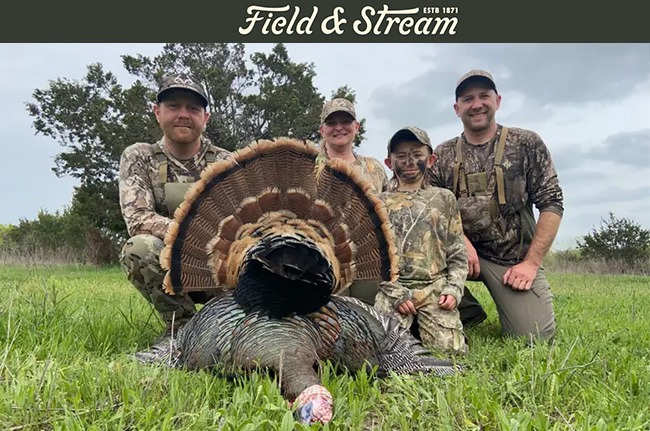 The author reflects on an exceptional turkey hunting season, spanning 30 days across various states from late March to early May. He notes an encouraging rebound in turkey populations in many areas, with harvest statistics showing increases, despite mixed impacts from regulatory changes. The author emphasizes the role of predation and habitat quality in turkey declines, advocating for better private land management. He also highlights the importance of perseverance when hunting, sharing anecdotes of successful hunts after initial setbacks, and concludes with observations on the effectiveness of different calling techniques and the variability of late-season gobbling patterns. Read the full article.
The author reflects on an exceptional turkey hunting season, spanning 30 days across various states from late March to early May. He notes an encouraging rebound in turkey populations in many areas, with harvest statistics showing increases, despite mixed impacts from regulatory changes. The author emphasizes the role of predation and habitat quality in turkey declines, advocating for better private land management. He also highlights the importance of perseverance when hunting, sharing anecdotes of successful hunts after initial setbacks, and concludes with observations on the effectiveness of different calling techniques and the variability of late-season gobbling patterns. Read the full article.
Halfway there: Winner of Florida raffle now halfway to slam
 Jeff Neill has several years’ experience hunting turkeys in his native Wisconsin, but traveling the country and encountering the different strategies that go along with differing terrain has heated his passion for the springtime pursuit to a fever pitch. The experience has kindled a fire in the adventurer’s soul for Neill. With Easterns and now an Osceola to his credit, he’s halfway to the Wild Turkey Grand Slam. Read the full article.
Jeff Neill has several years’ experience hunting turkeys in his native Wisconsin, but traveling the country and encountering the different strategies that go along with differing terrain has heated his passion for the springtime pursuit to a fever pitch. The experience has kindled a fire in the adventurer’s soul for Neill. With Easterns and now an Osceola to his credit, he’s halfway to the Wild Turkey Grand Slam. Read the full article.
8-Year-Old’s First Turkey Is a Smoke-Phase Bearded Hen
 Eight-year-old Vaughn Siver bagged a rare bearded hen with smoke-phase coloration during his first turkey hunt in early May in western South Dakota, accompanied by his dad, Cody. After setting up camp and scouting, they set up ground blinds and, despite initial challenges, Vaughn successfully shot the unique bird. Cody also managed to fill his tag by shooting a tom later. The experience, marked by the discovery of the rare leucistic turkey, made the hunt unforgettable for Vaughn, who enjoyed both the hunt and the camping adventure. Read the full article.
Eight-year-old Vaughn Siver bagged a rare bearded hen with smoke-phase coloration during his first turkey hunt in early May in western South Dakota, accompanied by his dad, Cody. After setting up camp and scouting, they set up ground blinds and, despite initial challenges, Vaughn successfully shot the unique bird. Cody also managed to fill his tag by shooting a tom later. The experience, marked by the discovery of the rare leucistic turkey, made the hunt unforgettable for Vaughn, who enjoyed both the hunt and the camping adventure. Read the full article.
Senior Solutions
 Laurie Lee Dovey offers a compelling look at how senior hunters adapt to the physical challenges of aging while maintaining their passion for the sport. At 69, the author shares insights from seasoned hunters like Brad Harris and Brenda Valentine, who emphasize the importance of self-assessment and adaptive equipment such as hearing aids, scopes, and lighter shotguns. The article highlights strategies for coping with declining mobility and senses, and the value of simplicity and patience in hunting. It encourages older hunters to embrace their limitations, use innovative tools, and savor the experience. Read the full article to discover how age can enhance, rather than hinder, the joy of turkey hunting. Read the full article.
Laurie Lee Dovey offers a compelling look at how senior hunters adapt to the physical challenges of aging while maintaining their passion for the sport. At 69, the author shares insights from seasoned hunters like Brad Harris and Brenda Valentine, who emphasize the importance of self-assessment and adaptive equipment such as hearing aids, scopes, and lighter shotguns. The article highlights strategies for coping with declining mobility and senses, and the value of simplicity and patience in hunting. It encourages older hunters to embrace their limitations, use innovative tools, and savor the experience. Read the full article to discover how age can enhance, rather than hinder, the joy of turkey hunting. Read the full article.
Osceola Turkeys: Thunder in the Palms
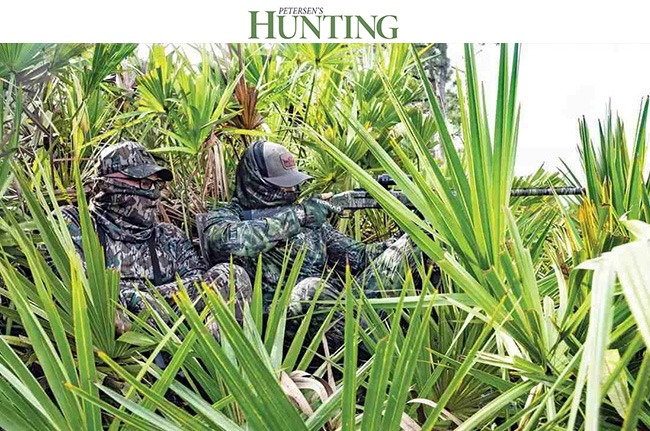 In "Osceola Turkeys: Thunder in the Palms," Joe Ferronato recounts his thrilling adventure hunting Osceola turkeys in Florida. Initially skeptical, he joins expert guide Mike Tussey, navigating dense forests and tropical storms. The article highlights the adrenaline of close encounters with these elusive birds and the challenges of the unique Florida ecosystem. Ferronato's newfound respect for turkey hunting and detailed gear insights make this a captivating read for hunting enthusiasts. Dive into the full story for an immersive experience of the Osceola turkey hunt. Read the full article.
In "Osceola Turkeys: Thunder in the Palms," Joe Ferronato recounts his thrilling adventure hunting Osceola turkeys in Florida. Initially skeptical, he joins expert guide Mike Tussey, navigating dense forests and tropical storms. The article highlights the adrenaline of close encounters with these elusive birds and the challenges of the unique Florida ecosystem. Ferronato's newfound respect for turkey hunting and detailed gear insights make this a captivating read for hunting enthusiasts. Dive into the full story for an immersive experience of the Osceola turkey hunt. Read the full article.
On The Ridge with Joe Judd: More successful tales from the hunt
 The article reflects on the joy and memories created during the 2024 wild turkey hunting season, which has been successful for both young and seasoned hunters in Franklin County. The author emphasizes that the greatest moments in turkey hunting are not just about the harvest but about sharing the experience with family and friends and passing on the tradition to the next generation. A highlight of the season is the story of Joe Warger and his son Casey, who reunited for a memorable hunt after nine years, exemplifying the deep bonds and cherished memories formed through turkey hunting. The article underscores the profound connection and joy that hunters feel when they engage with nature and share these experiences with loved ones. Read the full article.
The article reflects on the joy and memories created during the 2024 wild turkey hunting season, which has been successful for both young and seasoned hunters in Franklin County. The author emphasizes that the greatest moments in turkey hunting are not just about the harvest but about sharing the experience with family and friends and passing on the tradition to the next generation. A highlight of the season is the story of Joe Warger and his son Casey, who reunited for a memorable hunt after nine years, exemplifying the deep bonds and cherished memories formed through turkey hunting. The article underscores the profound connection and joy that hunters feel when they engage with nature and share these experiences with loved ones. Read the full article.
Turkey Season was an Experience
 The 2024 Spring Turkey season was memorable for the author, although no turkeys were harvested. Despite the lack of a successful hunt, the author cherished various experiences such as hearing turkey drumming, encountering wildlife, and enjoying the beauty of the outdoors. Memorable moments included observing turkeys, dealing with unpredictable weather, and encountering snakes and turtles. The author emphasizes the joy of being in nature and looks forward to future outdoor activities and habitat work. Read the full article.
The 2024 Spring Turkey season was memorable for the author, although no turkeys were harvested. Despite the lack of a successful hunt, the author cherished various experiences such as hearing turkey drumming, encountering wildlife, and enjoying the beauty of the outdoors. Memorable moments included observing turkeys, dealing with unpredictable weather, and encountering snakes and turtles. The author emphasizes the joy of being in nature and looks forward to future outdoor activities and habitat work. Read the full article.
State of the Wild Turkey 2024: An Interview with Dr. Mike Chamberlain
[caption id="attachment_53889" align="aligncenter" width="450"] John Hafner Photography[/caption]
Dr. Mike Chamberlain, known as the "Turkey Doctor," provided an update on the state of wild turkeys, noting mixed observations from the 2024 season. While some areas, like Arkansas, show signs of population recovery, other regions, particularly in the Southeast and Midwest, continue to experience declines. He emphasized the importance of ongoing research, which is currently more extensive and collaborative than ever, aimed at understanding and addressing factors affecting turkey populations. Chamberlain remains cautiously optimistic, highlighting that comprehensive and standardized research will eventually yield the answers needed to stabilize and improve wild turkey numbers. Read the full article.
The 2024 spring turkey hunting season has been filled with unforgettable moments and significant achievements, reflecting the vitality of turkey populations and the enthusiasm of hunters nationwide. Whether it's the record-setting harvests, the inclusive efforts of organizations like Hunters of Color, or the touching memorial hunts honoring legends like Roscoe Spaulding, these stories capture the essence of the hunting community. As we look forward to future seasons, these tales remind us of the importance of conservation, mentorship, and the shared joy of experiencing the great outdoors.
You may also be interested in:
The 2024 NWTF Spring Hunt Guide: About Wild Turkeys
The 2024 NWTF Spring Hunt Guide provides a glimpse of each state’s spring wild turkey season. The spring forecast shows the states’ estimated wild turkey population, as well as wild turkey harvest data from the previous season. Some states do not report population estimates due to unavailable data, and some season dates and/or bag limits are too specific to fully list (check regulations). All hunters should review the full regulations of the state in which they are hunting before going afield.
John Hafner Photography[/caption]
Dr. Mike Chamberlain, known as the "Turkey Doctor," provided an update on the state of wild turkeys, noting mixed observations from the 2024 season. While some areas, like Arkansas, show signs of population recovery, other regions, particularly in the Southeast and Midwest, continue to experience declines. He emphasized the importance of ongoing research, which is currently more extensive and collaborative than ever, aimed at understanding and addressing factors affecting turkey populations. Chamberlain remains cautiously optimistic, highlighting that comprehensive and standardized research will eventually yield the answers needed to stabilize and improve wild turkey numbers. Read the full article.
The 2024 spring turkey hunting season has been filled with unforgettable moments and significant achievements, reflecting the vitality of turkey populations and the enthusiasm of hunters nationwide. Whether it's the record-setting harvests, the inclusive efforts of organizations like Hunters of Color, or the touching memorial hunts honoring legends like Roscoe Spaulding, these stories capture the essence of the hunting community. As we look forward to future seasons, these tales remind us of the importance of conservation, mentorship, and the shared joy of experiencing the great outdoors.
You may also be interested in:
The 2024 NWTF Spring Hunt Guide: About Wild Turkeys
The 2024 NWTF Spring Hunt Guide provides a glimpse of each state’s spring wild turkey season. The spring forecast shows the states’ estimated wild turkey population, as well as wild turkey harvest data from the previous season. Some states do not report population estimates due to unavailable data, and some season dates and/or bag limits are too specific to fully list (check regulations). All hunters should review the full regulations of the state in which they are hunting before going afield.9 Trending Tweets from the Outdoors this Week
1.
Congrats to @MelissaBachman and family for wrapping up turkey season in one of the most beautiful spots, surrounded by flowers. #ITSINOURBLOOD #hunting #outdoors #wildturkey #turkeyhunting #turkeyseason pic.twitter.com/HfJlgb2kVV
— Sportsman Channel (@SPORTSMANchnl) June 18, 2024
2.
This will be the last season for nonresident bowhunters to purchase OTC elk tags: https://t.co/XdsxnJ8EzG pic.twitter.com/d2qlUEMsov
— Outdoor Life (@outdoorlife) June 18, 2024
3.
That's a funny looking turkey! 🤣#turkeyhunting #turkeyandturkeyhunting #wildturkey pic.twitter.com/GlmaCyN4AE
— Turkey & Turkey Hunting (@Turkey_Hunting) June 13, 2024
4.
Battle scars and not backing down. #Realtree pic.twitter.com/hhTHmkKZTd
— Realtree (@Realtree) June 18, 2024
5.
Its National Pollinator Week!!! Celebrate #PollinatorWeek by planting some native flowers for our friends! Pollinators play an essential role in our ecosystems, economies, and agriculture. pic.twitter.com/rddCysBGK8
— Indiana DNR EPP (@INdnrinvasive) June 18, 2024
6.
Congrats to @brodie.overbeck and his crew on some great turkeys from this past season, and a phenomenal photo to boot! Way to go guys! #ITSINOURBLOOD #hunting #outdoors #wildturkey #turkeyhunting #turkeyseason #mountrushmore pic.twitter.com/yzpzSH3SaH
— Sportsman Channel (@SPORTSMANchnl) June 17, 2024
7.
There is absolutely nothing like Spring Gobbler hunting!! What a great morning!! 👍🏻🦃 pic.twitter.com/8sSm27OGi0
— Pa_Turkey_Man 🦃 (@Pa_Turkey_Man) May 17, 2024
8.
How cool is this photo?
"The Shot of the Year!!" - @Buckmastersnation #ITSINOURBLOOD #hunting #outdoors #deer #deerhunting #whitetail #whitetaildeer pic.twitter.com/ELjfbyj4lQ — Sportsman Channel (@SPORTSMANchnl) June 17, 2024
9.
Follow LetsGoHunting on twitter and stay tuned for more updates from the hunting communityNo rod? No problem.
🎥: @bucketmouthbrand #LegendsInTheMaking #Fishing pic.twitter.com/zUmVjlyTpk — Field & Stream (@FieldandStream) June 19, 2024
Understanding the Crucial Relationship Between Firearm Manufacturers and Wildlife Conservation
NSSF, SIG SAUER, AFWA and USFWS unite to ensure the future of wildlife and habitat for many years to come.
The importance of the relationship between manufacturers like Sig Sauer and wildlife conservation can’t be understated. The symbiotic nature of the excise tax funding model in the United States allows for all involved parties to benefit, and further, the funds generated benefit all citizens through great conservation projects and supporting healthy fish and wildlife populations.https://youtu.be/ecmFvQfXHeo?si=_YbigDX71L7ZF7oD
In the latest video in our Partner with a Payer series, representatives from various wildlife agencies visited Sig Sauer’s facility in Newington, NH, to see how the money from excise taxes, paid by manufacturers, supports conservation efforts. Read NSSF's press release here.Financial Impact of the Pittman-Robertson Act
Since its implementation, the Pittman-Robertson Act has generated over $16.4 billion (more than $25 billion when adjusted for inflation) for states across the U.S. These funds are pivotal for wildlife conservation, hunter education programs, and the development of public shooting ranges. Joe Bartozzi, NSSF President and CEO, emphasized the critical nature of the partnership between firearm and ammunition manufacturers and state and federal wildlife agencies. This symbiotic relationship, he noted, has been instrumental in the success of conservation efforts over the past several decades.
SIG SAUER’s Contributions
Tom Taylor, an executive at SIG SAUER, explained that the company does more than just make products. SIG SAUER takes pride in providing significant funding for initiatives that support hunters, wildlife conservation, and other projects funded by the Pittman-Robertson Act. Their contributions help maintain healthy habitats and create public shooting sports ranges, showing their commitment to the environment.The Significance of Excise Taxes
The excise taxes collected from manufacturers like SIG Sauer are indispensable for state fish and wildlife agencies. These funds support a broad array of conservation activities, from buying land for habitat preservation to active habitat management.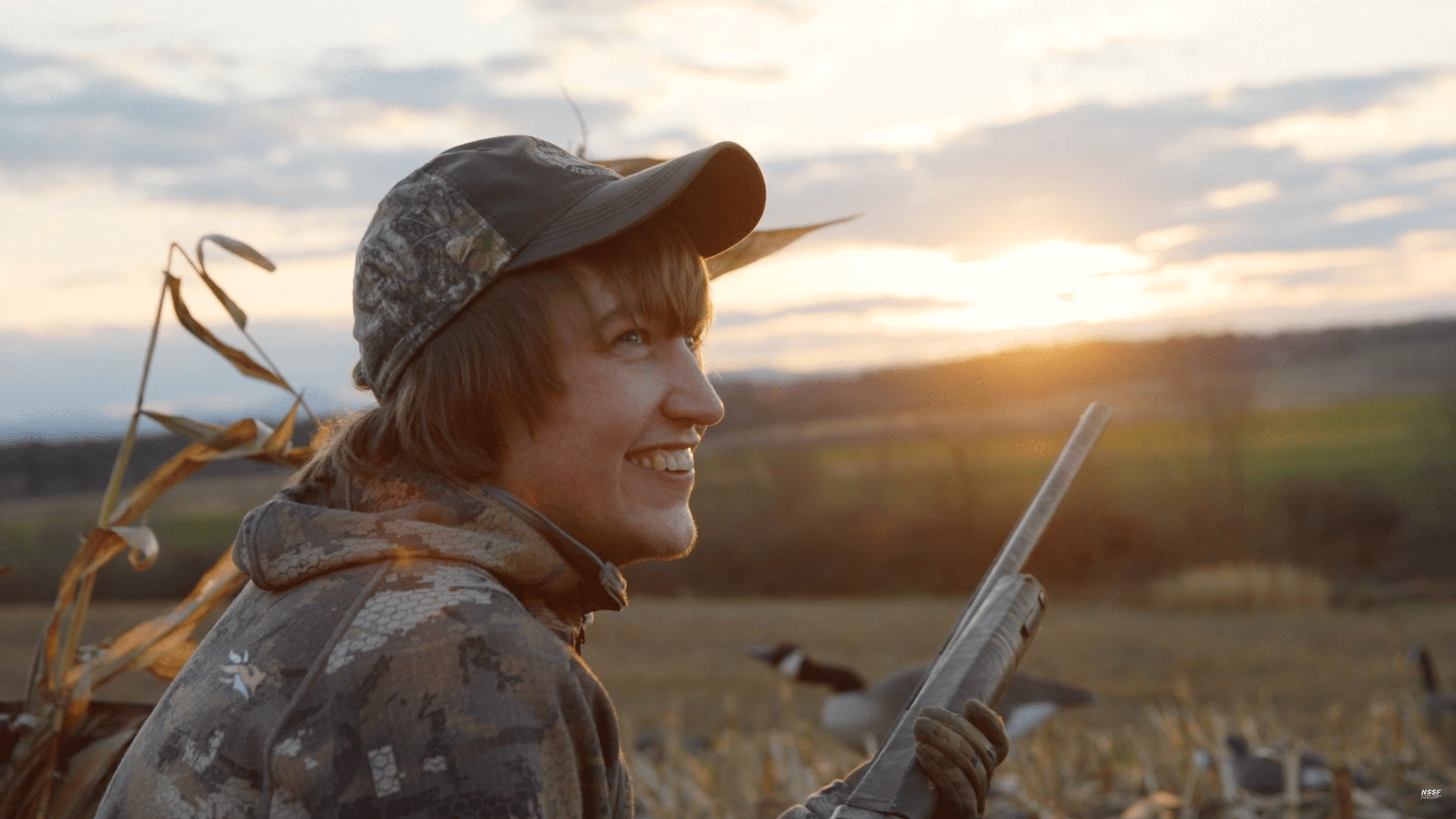
Broad Benefits of Conservation Funding
The benefits of these funds extend beyond the hunting and shooting communities. The conservation efforts supported by excise taxes enhance biodiversity, preserve natural habitats, and contribute to the overall health of ecosystems. This, in turn, benefits all citizens, as healthy environments are crucial for clean air, water, and the overall well-being of communities.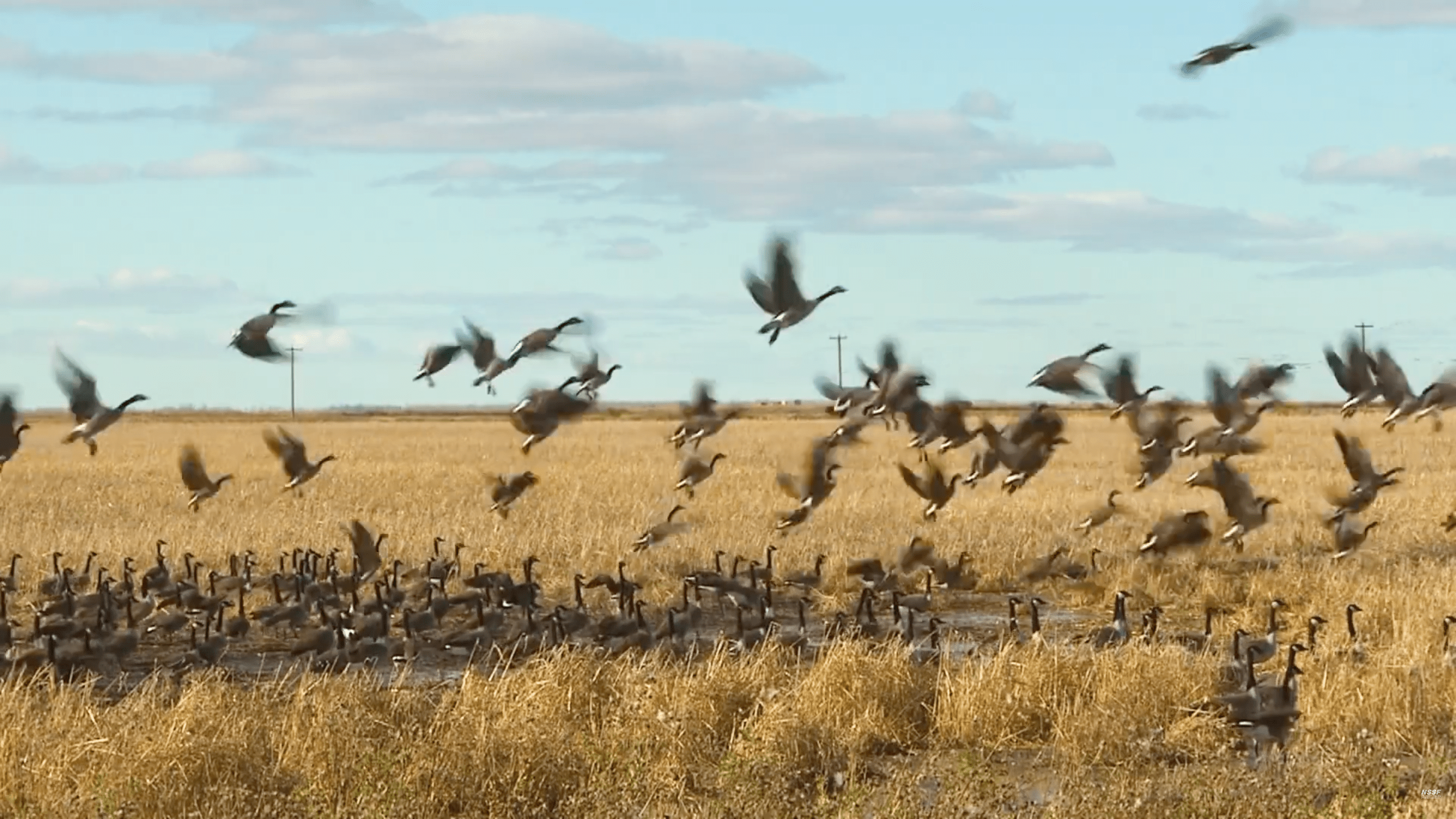 The partnership between firearm manufacturers and wildlife conservation agencies is a model for the world. It shows how industry participation can positively impact the environment and highlights the need for ongoing support for conservation efforts.
In short, the relationship between firearm manufacturers and wildlife conservation is vital. By understanding how excise taxes and industry contributions fund conservation, hunters and shooters can see the positive impact their purchases have on preserving nature for future generations.
Partner with a Payer
The Partner with a Payer initiative was developed to help generations of employees in the firearm, archery and angling industries, state agencies and the U.S. Fish and Wildlife Service to better understand their, and each other’s, roles in conservation.
More info and resources at https://www.nssf.org/partner-with-payer/
See other Partner with a Payer Videos:
https://www.letsgohunting.org/resources/articles/explore-hunting/how-do-excise-taxes-benefit-hunter-education-clark-county-shooting-complex/
https://www.letsgohunting.org/resources/articles/explore-hunting/how-excise-taxes-support-fish-restoration-conservation-and-more/
https://www.letsgohunting.org/resources/articles/explore-hunting/understanding-excise-taxes-wildlife-conservation-bighorn-sheep-population-management/
The partnership between firearm manufacturers and wildlife conservation agencies is a model for the world. It shows how industry participation can positively impact the environment and highlights the need for ongoing support for conservation efforts.
In short, the relationship between firearm manufacturers and wildlife conservation is vital. By understanding how excise taxes and industry contributions fund conservation, hunters and shooters can see the positive impact their purchases have on preserving nature for future generations.
Partner with a Payer
The Partner with a Payer initiative was developed to help generations of employees in the firearm, archery and angling industries, state agencies and the U.S. Fish and Wildlife Service to better understand their, and each other’s, roles in conservation.
More info and resources at https://www.nssf.org/partner-with-payer/
See other Partner with a Payer Videos:
https://www.letsgohunting.org/resources/articles/explore-hunting/how-do-excise-taxes-benefit-hunter-education-clark-county-shooting-complex/
https://www.letsgohunting.org/resources/articles/explore-hunting/how-excise-taxes-support-fish-restoration-conservation-and-more/
https://www.letsgohunting.org/resources/articles/explore-hunting/understanding-excise-taxes-wildlife-conservation-bighorn-sheep-population-management/
New Knives Coming to Stores in 2024
To meet consumer demand, knife manufacturers are constantly upping their game.
By Christopher Cogley The old saw, “A knife is a knife is a knife,” has never been a more blatantly inaccurate statement than it is today. There are more knives, of myriad design, on the market than ever before. To meet widespread demand knife manufacturers are continuously upping their game with new designs and materials and innovative functions that reset the bar on an almost daily basis. Companies are continuing to place importance on both the functionality, and the unmistakable aesthetic appeal, of the knives that carry their brand. Here is a look at some of the many new knife models that consumers will want to see in your store in 2024.5.11

Bear & Son Cutlery

Benchmade

Boker
Boker is using SHOT Show 2024 to re-launch a classic blade with a modern flair. The 943 BRLW folder features a 2.56-inch MagnaCut blade with a two-tone satin finish. With an overall length of 6 inches and tipping the scale at 2.3 ounces, the BRLW has titanium scales and pocket clip that add to its sleek, stylish design. SRP: $279.
Browning
In keeping with its tradition to provide hunters with all the tools they need to be successful in the field, Browning is releasing two new hunting knives at this year’s SHOT Show. The Primal Scalpel 2 Blade Folder features a deep-belly stainless-steel blade alongside a stainless-steel scalpel blade in a compact folder. The knife comes with a blade installation/removal tool that doubles as a place to store extra scalpel blades. Both blades are 2¾ inches long and are housed in a polymer handle with rubber scales. SRP: $60.
Buck

Cold Steel

Camillus
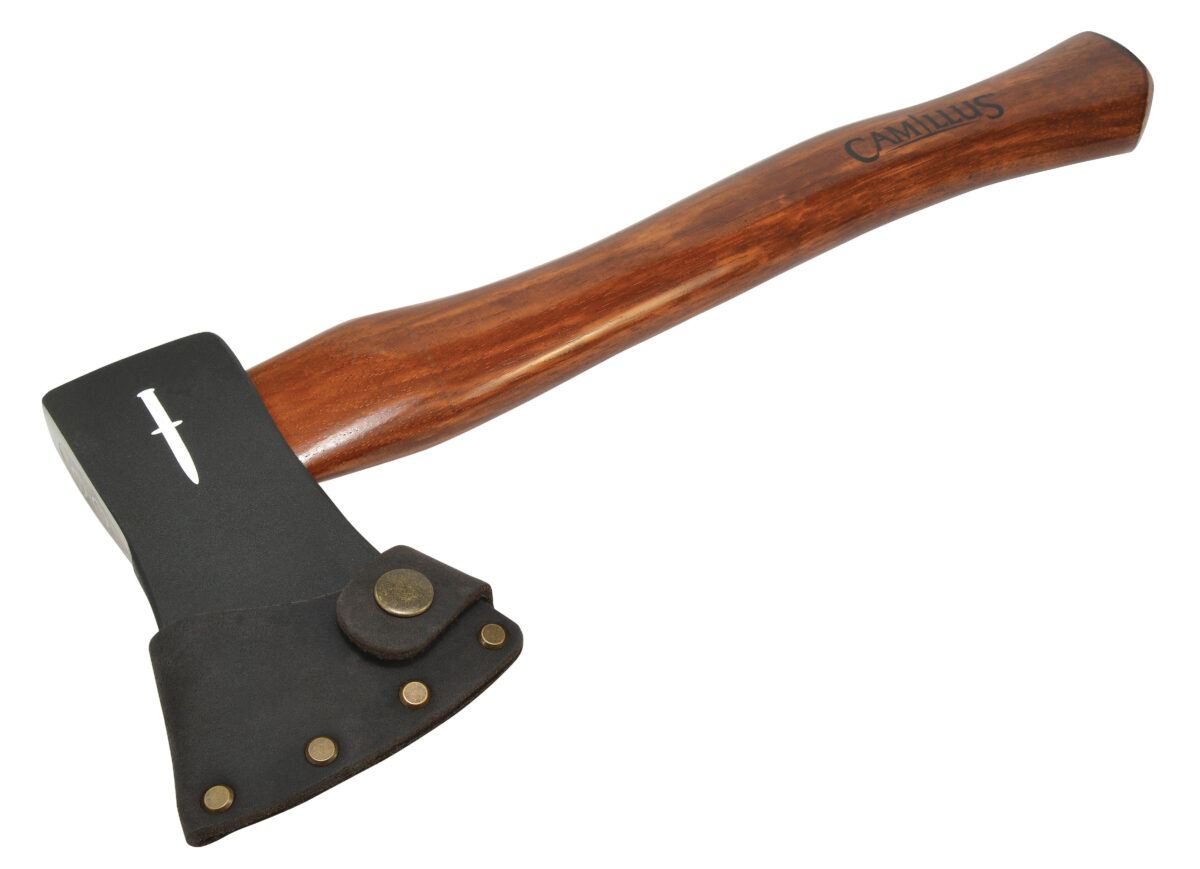
Columbia River Knife & Tool

Outdoor Edge

Spyderco
Spyderco has long been known for high-quality knives that stand the test of time, and the new launches at this year’s SHOT Show are no exception. Among the new introductions is the hefty Bodacious folder. Named after a rodeo bull deemed “the world’s most dangerous bull,” the USA-made Bodacious has a deep 3.7-inch blade made from CPM S30V steel housed in a G10 handle. Available with either a stainless or Spyderco’s black diamond-like coating. SRP: $350-$372. Spyderco is also releasing several new additions to its increasingly popular Salt Series of corrosion-resistant knives. The Manix 2 Lightweight Salt has a 3.4-inch blade made from CPM MagnaCut steel, which was created to deliver outstanding blade retention, strength, and corrosion resistance. The blade is housed in the bright yellow fiberglass-reinforced co-polymer handles that have become a signature for the Salt Series. The Manix 2 has a ball-bearing locking mechanism and a tip-up wire clip. SRP: $232.
SOG

W.R. Case
Case is releasing several new knife families this year. Among the new introductions is the Bridgeline folder. Combining Case tradition with a modern flair, the Bridgeline has a composite-and-wood handle with aluminum frames and bolsters to cut the weight down to a mere 2.8 ounces. The 2.75-inch blade is made from CPM20CV steel and features a Wharncliffe tip. SRP: $165.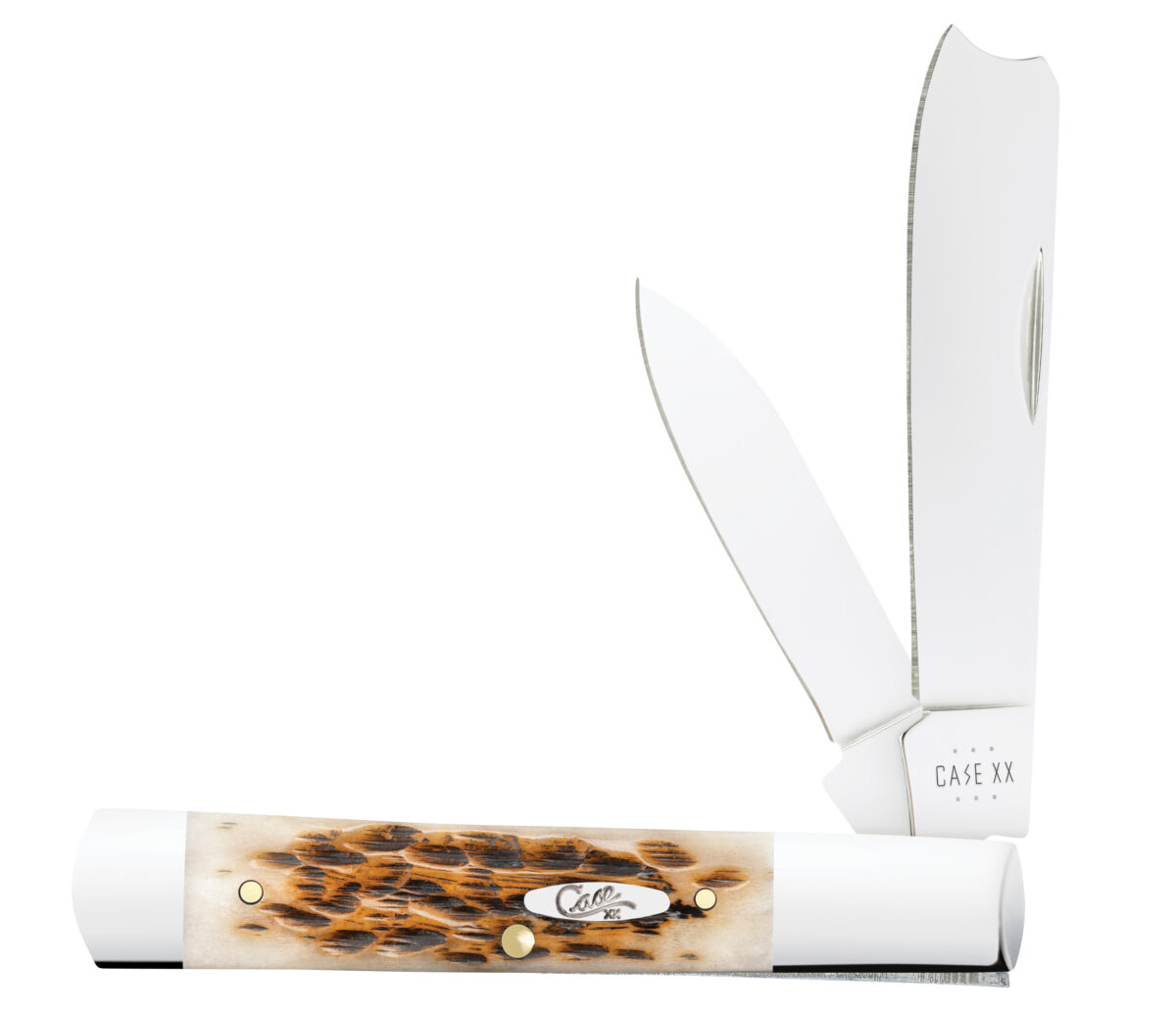
New Turkey Hunter +ONE®️ Starter Pack Promo
Are you a new turkey hunter or hoping to be a hunting mentor? We put together this package to encourage those interested in turkey hunting to try it this year.
We welcome all who are interested in hunting to participate -- from new to experienced hunters. Please share this with someone you think would like to get started.
Hunting wild turkeys can be overwhelming for any beginner, but the right information and gear can go a long way. The hunting location, the local hunting regulations, and the gear involved are the main ingredients you need to get started. Turkey hunting is always more fun with a friend along. The strategy and scouting can become a lot easier and the shared success is truly something that makes the hunt more memorable. Don't regret having to say "you should've been there" or "you had to see it to believe it!" Your participation in this giveaway will also make sure you're in the loop for other giveaway opportunities in the future. From a camo hunting blind to trail cameras for scouting to eye and ear protection, we’ve got a standard list of beginner gear ready for one lucky turkey hunter! Will you embrace the +ONE®️ mentorship mission and either try hunting for the first time or invite someone new on a hunt? It's the best way to give back as a hunter.More Help For Turkey Hunters
A great resource for turkey hunting is the National Wild Turkey Federation. They've got tips, events and a great community to get active in to learn more. It's extremely rewarding to get your own wild turkey and make great meals for yourself and others from the lean and organic wild game meat. We wish you the best luck in this giveaway and while hunting this year!Ensuring a Safe Hunt: Julie McQueen's 7 Essential Hunting Safety Rules
With the fall hunting season upon us, it's an ideal time to reinforce the importance of responsible, ethical, and secure hunting practices.
NSSF® and CarbonTV have announced a cooperative HuntSAFE partnership to promote hunting and firearm safety during the fall hunting season, starting with a new video, “Safety is Always in Season.” We are grateful to be joined by CarbonTV in spreading this critical message.
In the realm of firearm ownership and hunting safety, HuntSAFE stands as a beacon of guidance and responsibility. It's a vital component of the NSSF's Project ChildSafe® initiative, dedicated to promoting safe firearm handling, secure storage, and preventing unauthorized access. The acronym S.A.F.E. succinctly sums up the principles: Store your firearms responsibly when not in use; Always practice firearm safety; Focus on your responsibilities as a firearm owner; and Education is key to preventing accidents.
https://youtu.be/X8z9H_cKNJ0
This video, "Safety is Always in Season," features Julie McQueen, President of CarbonTV and host of "Outdoor Weekly." She shares seven "rules to live by" when using or handling firearms at home, on the range, and especially in the field.7 Hunting Safety Rules
By Julie McQueen, President of Carbon TV and host of "Outdoor Weekly." For everyone who enjoys our hunting heritage, wants to share it with friends and family and wants to see participation in hunting grow, I'll be blunt: we've got to model every aspect of hunting safety. The fact is, whether in the field, at the range or in your house, firearm accidents are preventable. I want you, your friends and your kids to always be safe and responsible Hunters so Carbon TV has partnered with the National Shooting Sports Foundation's project ChildSafe program to provide these hunting safety tips. I know you and your hunting partners will keep them top of mind before, during and after the hunt. The rules of hunting safety are pretty simple, but because of that, some people can get too casual and that's when accidents can happen my advice is don't just think of these as tips but as actual rules to live by.-
Keep the Muzzle Pointed in a Safe Direction
Keeping the muzzle pointed in a safe direction is the foundation for preventing gun accidents. This means always being aware of where the muzzle is pointed and never grabbing, moving or passing a gun by the barrel.
-
Always Assume a Gun is Loaded
Always assume a gun is loaded even if it looks like the magazine is out there may still be around in the chamber, so don't take any chances. Always check before handling a gun and keep your fingers off of the trigger.
-
"Safety On" is Not Enough
Having the Safety on is not enough. Of course, you should always keep the safety on until you're ready to shoot, but don't rely on it as the only way to prevent a gun from going off. The safety is a mechanical device and it can fail, so remember rule number one and two and watch the muzzle and keep your finger off the trigger until it's time to take the shot.
-
Be Certain of Your Target
Be certain of your target two things here: Firstly you want to be absolutely certain that what's in your sights is legal game, it is no fun telling a game warden that you accidentally shot a doe if you're only allowed to shoot a buck you also don't want to accidentally shoot another hunter; Secondly, you want to be certain of your target and what's behind it, centerfire bullets can travel well over a mile so make sure the area behind the target is clear of other animals other hunters, structures and vehicles.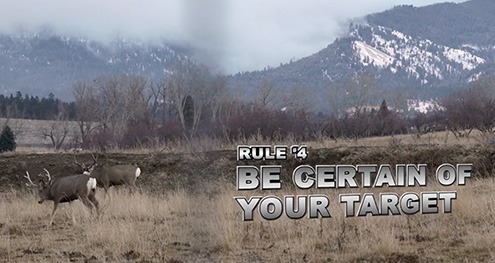
-
Identify Yourself
You don't want to be mistaken for game by other hunters, so wear blaze orange in the field, avoid colors or patterns that can be confused for game, use a flashlight if you need to and make sure you're easily identifiable. This is especially important if you're packing out a deer or other animal where the antlers on your pack could become a target.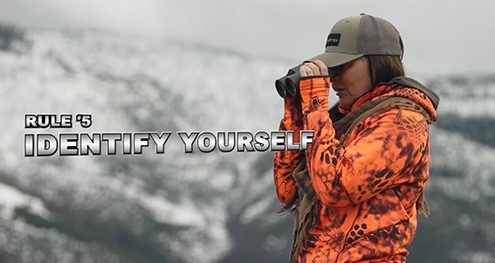
-
Unload Your Firearm at Obstacles
A trigger can get caught on just about anything, so clear the chamber or unload the gun completely before you have to climb across a stream or over a log over a fence legally, of course, or when you're passing a gun back and forth to a companion and again never pull a gun towards yourself by the muzzle.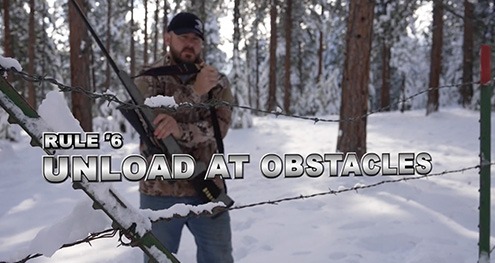
-
Tell Someone Where You Will be
Make sure someone knows where you're going to be and when you're supposed to be back, especially if you'll be hunting alone. Emergencies do happen and time is of the essence if you need to be rescued, make sure searchers know where to start and it can absolutely save your life.
